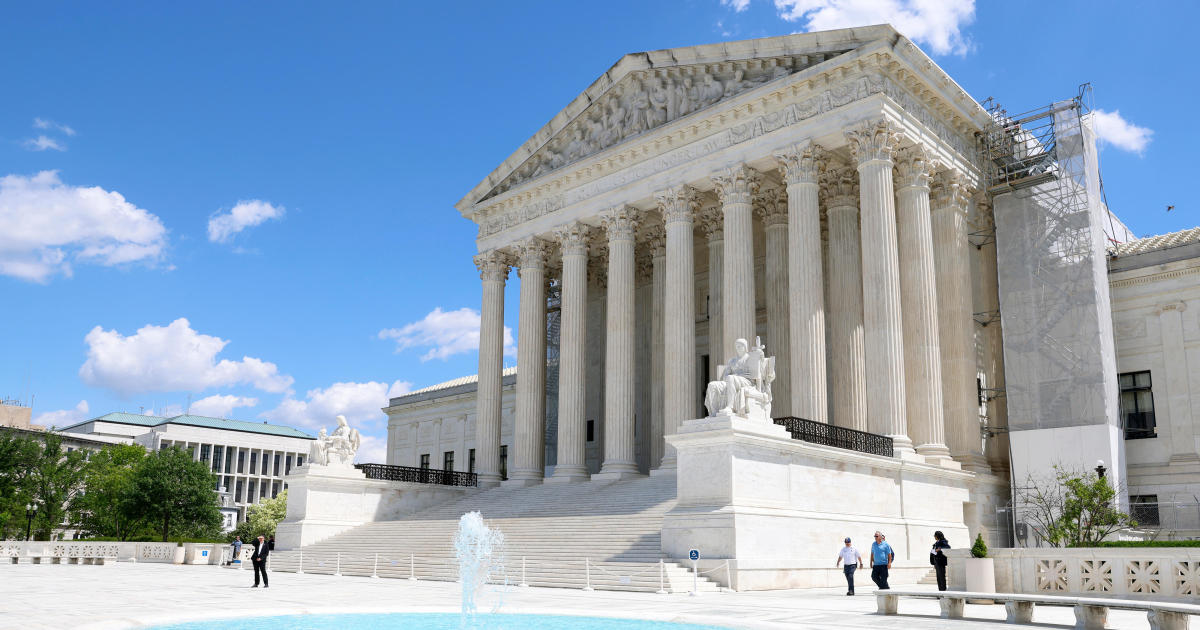How are the latest airstrikes different from last year's attack in Syria?
WASHINGTON -- The decision to strike Syria Friday night marked President Trump's second order to attack targets in the country. Last year, he authorized a barrage of cruise missiles to hit a Syrian airfield in response to a chemical weapons attack the U.S. blamed on Syrian President Bashar Assad. The U.S. acted alone, focusing on a single target.
This time, the U.S. had the U.K. and France by its side in a joint military operation that focused instead on three sites, according to the Pentagon. Those aren't the only difference between the strikes. Here are a few key distinctions:
Number of missiles fired
Secretary of Defense James Mattis said this year's strikes involved about "double" the number of weapons. The Pentagon clarified on Saturday that this year's strikes involved 105 missiles -- compared to 59 last year.
Mattis said the strikes this year were much "harder" than last year's.
Number and nature of targets
This year, the U.S. and its allies had three targets: two storage facilities and one research center believed to be associated with the Syrian regime's chemical weapons program. Specifically, the U.S. and allies hit Him Shinshar weapons sites, outside the city of Homs, and the Barzeh research center in Damascus.
Those places were targeted because the U.S. believes they are responsible for helping create the Syrian regime's chemical weapons program. The Pentagon explained that the research center is believed to be responsible for the research, development, production and testing of chemical weapons, while they believe the two storage facilities are the location of Syria's sarin production and a chemical weapons facility that also entails a key command post for the Assad regime.
Last year, the airbase was a single target -- the Shayrat airbase -- that base that was believed to be where the Syrian regime's chemical weapons attack originated.
"Last year the focus was on the delivery," Pentagon spokesperson Dana White said on Saturday. "This time we went, the strikes went at the very heart of the enterprise to the research, to develop, to storage. So we are very confident that we have significantly crippled Assad's ability to produce these weapons."
But that didn't seem to satisfy reporters in the Pentagon press corps, who continued to ask variations of how this strike would really make a difference in ways that last year's have not.
Involvement of U.S. allies
The U.S. coordinated the attacks this year with the U.K. and France. Last year, the U.S. carried out the attack on its own.
"A combined operation with the armed forces of France and the United Kingdom is now underway," President Trump said Friday night, when he announced the operation. "We thank them both."
This time around, the president worked closely with British Prime Minister Theresa May and French President Emmanuel Macron, speaking with them both throughout the week by phone.
"Well this is very significant," CBS News Radio national security consultant Jeff McCausland said of the international response on CBSN Saturday. "Not only does it expand the amount of military capabilities but the significance today is much more political. It shows a solidarity of the United States with our two principal allies, the British and the French."
McCausland said it also "shows that the international community is not going to stand idly by and watch this particular, very important, international legal norm about the prohibition of the use of chemical weapons to go without a response."
"But I think even more importantly, it also sends a very clear message to Moscow, that the United States and its principal NATO allies are united in opposition to things that Russia is doing around the world."
That doesn't mean the overnight strikes, however, don't share similarities with the April 2017 attack in Syria. And one question that remains -- despite the differences -- is the level of impact.
Official remarks on strikes' intent
Both of the U.S. strikes, last year and this year, came as a direct response to the Assad regime's believed use of chemical weapons on its own people. Last year's chemical weapons attack killed dozens civilians, as did this one. The response was an attempt to weaken Assad's capabilities, and make the prohibition of chemical weapons clear.
"It is in this vital national security interest of the United States to prevent and deter the spread and use of deadly chemical weapons," said Mr. Trump last year, decrying the deaths of innocent children.
This year's message wasn't too different.
"The purpose of our actions tonight is to establish a strong deterrent against the production, spread, and use of chemical weapons," Mr. Trump said Friday night. "Establishing this deterrent is a vital national security interest of the United States."
The message in both cases has also been the same: that the strikes have damaged the Assad regime's capabilities, and that they don't indicate that the U.S. mission in Syria has changed.
"Our focus remains defeating ISIS. It is not to get involved in the Syrian civil war," Pentagon spokeswoman Dana White told reporters.
The Trump administration said the same thing last year. Then-U.S. Secretary of State Rex Tillerson, who has since been fired, said the strikes did not indicate a shift in U.S. policy toward Syria.
"I would not in any way attempt to extrapolate that to a change in our policy or posture relative to our military activities in Syria today. There has been no change in that status," Tillerson said at the time.
Mr. Trump, however, has said recently that he wants to pull out of Syria "very soon" -- a desire that seems to be complicated by this weekend's strikes. The White House has given no timeline on any potential strategy to remove the roughly 2,000 U.S. troops in Syria.
No clear roadmap
The White House and Pentagon, last year and now, have not clearly outlined the U.S. mission and strategy in Syria, as many reporters have pointed out, then and now. The administration continues to insist, as White said Saturday, the main mission is to defeat the Islamic State of Iraq and Syria (ISIS) and not further intervene in the Syrian civil war.
But what happens next remains unclear.
"America does not seek an indefinite presence in Syria under no circumstances," Mr. Trump said Friday night. "As other nations step up their contributions, we look forward to the day when we can bring our warriors home. And great warriors they are. Looking around our very troubled world, Americans have no illusions. We cannot purge the world of evil, or act everywhere there is tyranny."



